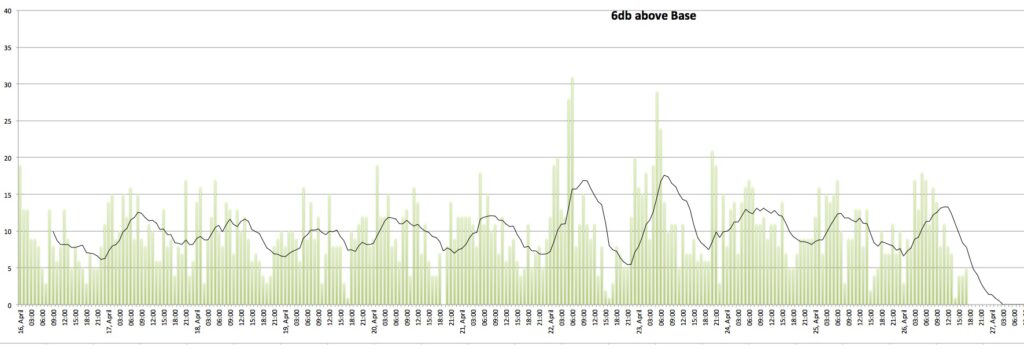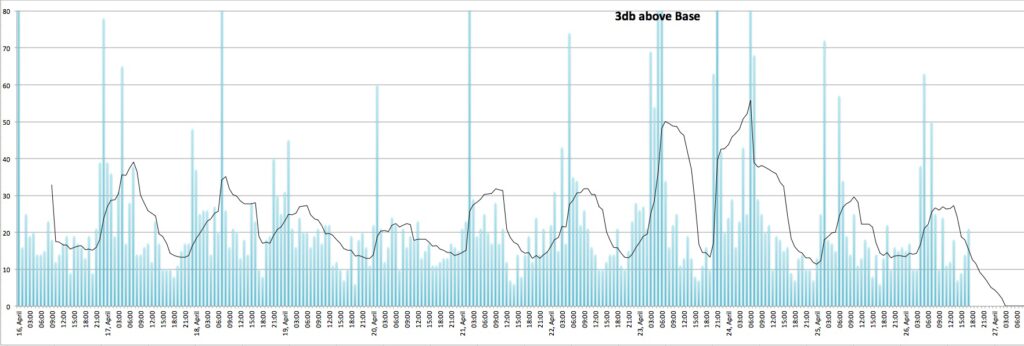With the recording of the Geminid shower last year producing a graph that seemed to match pretty well with data collected and published by the the IMO, I felt that the set up of my radio telescope was working well enough to capture last months Lyrids.
Running between the 16th and 25th this gave enough of a window to allow the plot to show both the general background activity both before and after the shower. Apart from a glitch that stopped the recording prematurely on the 26th, I think the whole process went pretty well.
Just as a matter of interest, I thought I would see if the time of the highest rates coincided with the shower radiant reaching its Zenith at the point of recording. I’m making a few assumptions here, but I will assume that with the Graves radar pointing South, that the returns from Ionised trails are happening over the mid Mediterranean – somewhere over the Balearic Islands or Sardinia. Setting my planetarium software at this location, Lyra crosses the Zenith at about 5:00 UT over the period I’m monitoring. This seems to correlate quite well with my peak readings at that time, so I would guess that I’m mostly recording Lyrids and not something else.
Looking at the resulting graphs, the level of activity isn’t as as dramatic as the Geminids. The peak was predicted on the night of the 21st/22nd and looking at the 10 hour moving average plot – the black line – I seem to have a peak at 9:00 UT on the ‘above 9db’ chart. But look at the rates on the 6 db chart and there are two peaks centred around 9:00UT on both the 22nd and the 23rd. Move to the 3db chart and those two peaks move a day forward and high levels of activity now appear on the 23rd and 24th.
So what does this indicate then?
Another interesting feature is the ‘cliff fall’ drop in activity on the 3db chart at 6:00 UT on the 24th. Would this be some kind of gap in debris field ? – so many unanswered questions 🙂
All very confusing until you look at the graph on the IMO’s website https://www.imo.net/live/lyrids2014/ when things start to look a little clearer. Their chart shows a cluster of observations at midnight on the 21st, 22nd and 23rd. The peaks for the 22nd and 23rd correlate well with the 3db and 6db chart, but not with the higher power returns on the 9 db chart, where I’m recording much higher power levels on the 22nd.



I’m currently recording the Eta Aquarids which will be peaking tonight – the 7th- so I wonder what shape of graphs I will get from that.